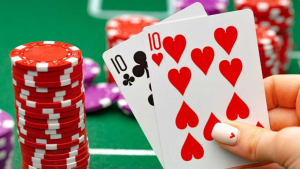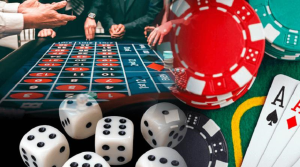The number one casino game in the world is a bit of a mystery to many American casino-goers. Baccarat traces its history to the gambling salons of Italy and France, but within the past thirty years its rise in casinos—mostly in Asia but increasingly in the United States—has made it a game that casino managers and gamblers alike are flocking to. How big is baccarat worldwide? Casinos in Macau have, since they dethroned Las Vegas in 2006, made more money than those in any other city in the world. Last year, Macau’s 40 casinos made more than 88 percent of their $33.2 billion from baccarat. Singapore casinos likewise get much of their revenue from the game, and even on the Las Vegas Strip—where many visitors don’t even know the rules of the game—it accounts for 18 percent of total casino win. The only game that produces more win for Strip casinos is slots, and there considerably more slot machines in Las Vegas than baccarat tables.
Bill Zender, a former Nevada Gaming Control Agent, casino dealer, executive, and current consultant, literally wrote the book on managing casino games. He’s seen baccarat grow considerably over his 40+ year career. “Before the influx of Asian players, to get people interested in the game, we really had to dress it up,” he says. “So you had the big double tables, dealers in tuxedos, and attractive women in evening gowns standing around. It was very James Bond.” Zender says that, over the past twenty years, Asian high rollers have almost universally made baccarat their game of choice because it is uniquely suited to their cultural preferences. “The cards are shuffled, and they are put into the dealing shoe,” he says. “There is no hitting or standing for the player—it is all based on pre-determined rules. So they believe that their luck flows into the shoe. This is very important. It used to be that we would burn [discard] a card if a dealer made an error, but when we did that the Asian players would leave the table; they thought it ruined their luck. So we started saving the card and dealing a dummy hand instead.”
Although it’s often tucked away in high-limit gaming areas, baccarat is a simple game to play. Players choose whether to bet on the “Player” or “Banker” hand, then sit back while the dealer does the rest. The object of the game is to get closer to nine than the opposite hand. If your cards total above nine, the first digit is dropped. For example, a seven and a six would result in a 13, which is dropped to a three. 10-count cards (tens, jacks, queens, and kings) count as zero, while aces count as one. Dealers follow a fixed set of rules which determine whether a third card is drawn, so the only decision for the player to make is which hand to bet on, and how much to wager.
Why are high rollers attracted to baccarat? In addition to the cultural reasons Zender outlined, the game has one of the lowest hold percentages in the casino, with an average house advantage of about 1.2 percent on banker and player bets. There is a third bet, tie, which, if both hands equal the same number, pays off eight to one, but it has a much larger house edge—over 14 percent. Most serious players, then, stick to player or banker.
What makes baccarat dangerous for casinos is that, due to the large amounts of money bet and the thin house edge, players have the potential to win serious money at the casino’s expense. How high do the betting limits go? Zender cites casinos in Singapore, which take bets as high as $750,000 SGD (about $550,000 USD) on a single hand, and shares that casinos on the Las Vegas Strip might take bets as high as $150,000 per hand. While casinos can potentially make millions in a few hours, they can also lose millions.
“The rule of thumb I tell them,” Zender says of his advice to casino managers looking to reap the profits of baccarat, “is that your risk is 100 times your average bet. So if a guy is betting $10,000 a hand, he could conceivably win $1 million from you. That’s within two standard deviations, so it can happen.”









